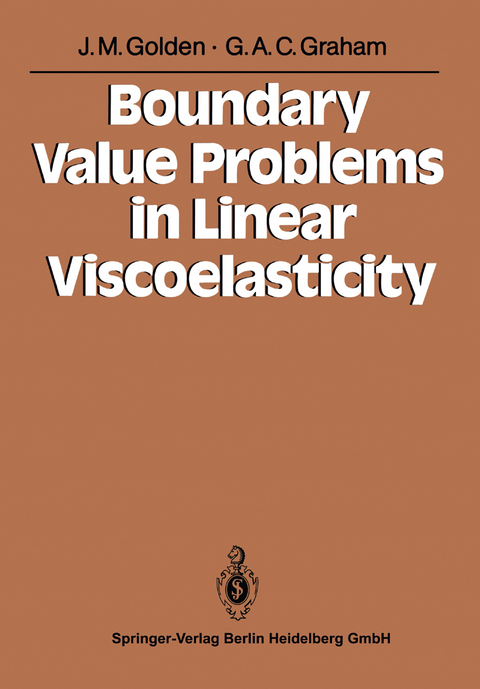
Boundary Value Problems in Linear Viscoelasticity
Springer Berlin (Verlag)
978-3-662-06158-9 (ISBN)
1. Fundamental Relationships.- 2. General Theorems and Methods of Solution of Boundary Value Problems.- 3. Plane Non-inertial Contact Problems.- 4. Plane Non-inertial Crack Problems.- 5. Three-dimensional Contact Problems.- 6. Thermoviscoelastic Boundary Value Problems.- 7. Plane Inertial Problems.- Appendix I Tables of Relevant Integrals and Other Formulae.- Table A1.1 Hilbert Transforms on [-1, 1].- Table A1.3 Miscellaneous Integrals Associated with Hilbert Transforms.- Table A1.4 Other Miscellaneous Integrals and Relationships.- Appendix II Boundary Value Problems for Analytic Functions.- A2.1 Some Properties of Analytic Functions.- A2.1.1 The Principle Value of a Singular Integral.- A2.1.2 Analytic Continuation.- A2.1.3 Liouville's Theorem.- A2.1.4 Singularities.- A2.1.5 Branch Points.- A2.2 Cauchy Integrals.- A2.3 The Hilbert Problem with Constant Coefficient.- A2.4 The Hilbert Transform.- Appendix III Fourier Transforms.- A3.1 Definition and Basic Properties.- A3.2 Analytic Properties of Fourier Integrals.- Appendix IV Non-singular Integral Equations.- A4.1 Fredholm Equations.- A4.2 Volterra Equations.- References.
| Erscheint lt. Verlag | 13.7.2013 |
|---|---|
| Zusatzinfo | XIV, 266 p. 17 illus. |
| Verlagsort | Berlin |
| Sprache | englisch |
| Gewicht | 494 g |
| Themenwelt | Naturwissenschaften ► Physik / Astronomie ► Allgemeines / Lexika |
| Naturwissenschaften ► Physik / Astronomie ► Theoretische Physik | |
| Schlagworte | Analysis • analytic function • Applied mathematics • Elasticity • Integral • integral equation • Polymer • transform theory |
| ISBN-10 | 3-662-06158-9 / 3662061589 |
| ISBN-13 | 978-3-662-06158-9 / 9783662061589 |
| Zustand | Neuware |
| Haben Sie eine Frage zum Produkt? |
aus dem Bereich


